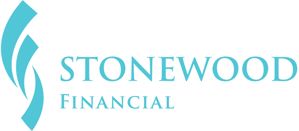I know you have a ton of metrics to watch. Many of them don’t tell a story and don’t help you make critical decisions. They just stress you out.
This one will change your life: Custom Acquisition Cost, or “CAC”.
How will CAC make you smarter?
CAC answers 3 questions that you probably can’t answer today. And without these answers, you’re guessing about where to spend your money. The 3 questions are:
-
How much do I currently spend to get a new customer?
-
How long does it take me to break even?
-
Where should I be spending?
How much do I currently spend to get a new customer?
Here’s a common misconception: “That customer came from a $10 lead, so my CAC is $10.”
If you think that, you’re probably lighting money on fire.
Calculating CAC isn’t hard. Simply divide all of your sales, marketing, and advertising costs by the number of new customers you won. Here’s an example:
Total spent on sales, marketing, and advertising: $150,000.
Total new customers acquired: 550.
CAC = $150,000 / 550 = $273.
When I work with agents to figure out their key metrics, CAC typically comes in between $225 and $375. If you’re much over $400, you might be spending too much. If you’re under $200, you might be leaving out some of your costs.
Note: You should also do this for individual sales and marketing activities. Those with clear sales attribution (Internet leads) will be easier to calculate than those with weak attribution (billboards). Just keep track of your assumptions so you can compare apples to apples over time.
How long does it take me to turn a profit on a new customer?
Let’s make the following assumptions:
-
My new customer has an annual premium of $1750.
-
My commission is 10%, or $175.
-
My CAC is $273 (from the example above).
As you can quickly see, this customer will not be profitable upfront. How long will it take to start generating a profit?
$273 / $175 = 1.56 years.
So, on average, a customer like this will turn profitable in just over 18 months. That’s ok, actually. If that number scares you, it’s just because you’ve never thought about it before. It costs money to acquire a customer. You make your money over time in this business.
To clarify, here’s a schedule of Profit and ROI based on how many years you keep the customer:
Years: 1 — Profit: -$98 — ROI: -36%
Years: 2 — Profit: $77 — ROI: 28%
Years: 3 — Profit: $252 — ROI: 92%
Years: 5 — Profit: $602 — ROI: 221%
Years: 10 — Profit: $1477 — ROI: 541%
Years: 20 — Profit: $3227 — ROI: 1182%
Notice row 1.
Suppose the customer doesn’t renew. This is critical. Here’s why:
-
For a salesperson, it’s a “win” because it generated a commission.
-
For a business owner, it generates a net loss and is a catastrophe.
Salespeople want sales. Business owners want clients. Big difference. A lot of the agents I talk to think like sales managers, not business owners.
Keep in mind that this table is probably lying because if you’ve kept a customer for 20 years, you’ve probably won more of their business, so profit and RIO will have gone up even more.
Where should I spend my money to get new customers?
Generically speaking, you should spend more on activities that produce higher ROI with lower payback periods.
If you rank your activities based on ROI, you’ll know pretty quickly where you should be spending more versus less versus none.
That’s not always true, though. There are some things you do to build brand awareness, establish a reputation in the community, and drive word-of-mouth and referrals. They’re hard to measure. Initially, you can treat them like more of a fixed cost and fund them with the high-ROI activities that you’ve identified.
Bonus: How do I take this to the next level?
Now we’re talking. If you really want to let this rip, here are the upgrades you’re looking for:
Spend More.
There are four games to play here. Choose wisely:
Game 1: spend more to make less (super weak).
Game 2: spend less to make less (weak).
Game 3: spend less to make the same amount (still weak).
Game 3: spend more to make way more (strong).
If you don’t understand your CAC, you’re just guessing at this.
Maximize Customer Lifetime Value.
The majority of agents I talk to think a sale with a $175 commission is a $175 sale. But it’s not. It’s $175 times however many years you can earn it.
Here’s a better way to think about it. Your X-axis is years, and your Y-axis is dollars. You want to maximize both. You do that by regularly meeting with customers, building trust, having high-value conversations, and solving important problems.
Salespeople only think about the Y axis. Again, that’s the difference between a sales manager and a business owner.
Which are you?
Run experiments all the time.
You’ve got to try things. In fact, if you implement CAC as a core metric, you’ll be able to shift investment from low-ROI activities to experiments. Think of it as funding Research and Development.
As you find things that work, optimize them and double down on them.
As you find things that don’t work, fix or cut them.
Spend on things that are hard to quantify.
Remember that the buyer’s journey is complicated. Maybe someone talked to their friend, got your mailer, saw your billboard, met you at the elementary school, and then got a cold call from someone on your team who’s grinding Internet leads. Do you give attribution to the Internet lead?
If you dump all the “fluffy” stuff because attribution is hard, you’ll hurt your business.
As with experiments, you need to generate profit and reinvest some of it into these activities.
This article content comes from BPC partner Client Focus. To read the original article, visit their website.











